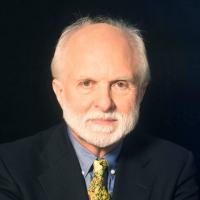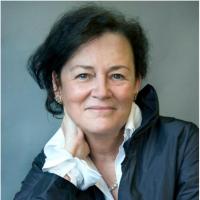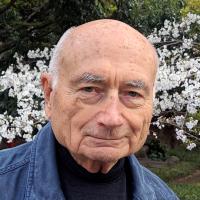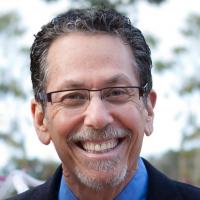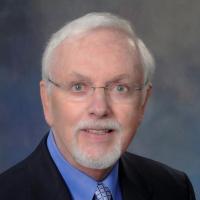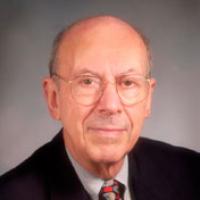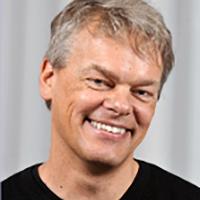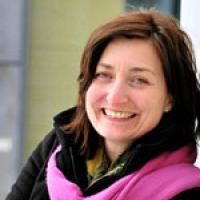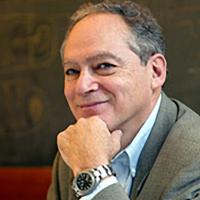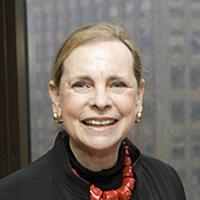Horwitz Prize Awardees
Each year since its inception in 1967, the Louisa Gross Horwitz Prize has been awarded by Columbia University for outstanding basic research in biology or biochemistry. The purpose of the prize is to honor a scientific investigator, or group of investigators, whose contributions to knowledge in either of these fields are deemed worthy of special recognition.
Present - 2011 Awardees
Below is a list of the distinguished Horwitz Prize awardees from this year to 2011.
2022
Karl Deisseroth, MD, PhD
- Investigator, Howard Hughes Medical Institute
- Professor of Bioengineering, Psychiatry and Behavioral Sciences Stanford University, USA
Karl Deisseroth, MD, PhD, is a professor of bioengineering and a professor of psychiatry and behavioral sciences at Stanford University, USA. He is also an investigator at the Howard Hughes Medical Institute. Deisseroth received his undergraduate degree from Harvard University, and completed his PhD and MD from Stanford.

Peter Hegemann, PhD
- Hertie Professor for Neuroscience Institute of Biology and Experimental Biophysics Humboldt-Universität zu Berlin, Germany
Peter Hegemann, PhD, is a Hertie Professor for Neuroscience at the Institute of Biology and Experimental Biophysics at the Humboldt-Universität zu Berlin, Germany. Hegemann completed his undergraduate studies in chemistry at the University of Münster and LMU Munich, and received his PhD from the Max-Planck-Institut für Biochemie, Martinsried.

Gero Miesenböck, MD
- Waynflete Professor of Physiology, University of Oxford, UK
- Director, Centre for Neural Circuits and Behaviour, University of Oxford, UK
Gero Miesenböck, MD, is the Waynflete Professor of Physiology and director of the Centre for Neural Circuits and Behaviour at the University of Oxford, UK. Miesenböck completed his undergraduate studies at the University of Innsbruck in Austria and Umeå University in Sweden, and received his MD from the University of Innsbruck Medical School.

2021
Katalin Karikó, PhD
- Senior Vice President, BioNTech SE
- Adjunct Professor, Perelman School of Medicine, University of Pennsylvania
Dr. Karikó has been senior vice president of BioNTech SE since 2013. She also is adjunct professor at the University of Pennsylvania’s Perelman School of Medicine, where she worked for 24 years. She received her PhD in biochemistry from the University of Szeged in Hungary in 1982. Her research for decades has focused on RNA-mediated mechanisms with the ultimate goal of developing in vitro-transcribed mRNA for protein therapy. Her groundbreaking investigation of RNA-mediated immune activation and her co-discovery that nucleoside modifications suppress immunogenicity of RNA unlocked the opportunity for the therapeutic use of mRNA. She and Drew Weissman co-invented and patented the use of nucleoside-modified mRNA, a key discovery that made possible the COVID-19 mRNA vaccines developed by BioNTech/Pfizer and Moderna/NIAID.

Drew Weissman, MD, PhD
- Professor of Medicine, Perelman School of Medicine,University of Pennsylvania
Dr. Weissman is professor of medicine at the Perelman School of Medicine, University of Pennsylvania. He received his graduate degrees from Boston University School of Medicine. Dr. Weissman, in collaboration with Dr. Katalin Karikó, discovered the ability of modified nucleosides in RNA to suppress activation of innate immune sensors and increase the translation of mRNA containing certain modified nucleosides. The nucleoside-modified mRNA-lipid nanoparticle vaccine platform Dr. Weissman’s lab created is used in the first two approved COVID-19 vaccines produced by Pfizer/BioNTech and Moderna. They continue to develop other vaccines that induce potent antibody and T cell responses with mRNA-based vaccines. Additionally, Dr. Weissman’s lab develops methods to replace genetically deficient proteins, edit the genome, and specifically target cells and organs with mRNA-LNPs, including lung, heart, brain, CD4+ cells, all T cells, and bone marrow stem cells.

2020
Robert Fettiplace, PhD
- Professor of Neuroscience, Department of Neuroscience, University of Wisconsin-Madison
Dr. Fettiplace studied at Cambridge University in the United Kingdom, obtaining a BA in medical sciences and a PhD in biophysics, then joined Denis Baylor at Stanford University for postdoctoral work on turtle photoreceptors. In 1976, he returned to Cambridge University and continued research on turtles but switched to studying auditory transduction. With Andrew Crawford, he described the sensitivity and frequency tuning of auditory hair cells and discovered that individual turtle hair cells were electrically tuned to specific frequencies arranged along the cochlea like keys of a piano. He and Jon Art showed that a hair cell's electrical tuning frequency is determined by the number and kinetics of its Ca2+-activated K+ (BK) channels, implying that distinct kinetic forms of the BK channel encode different frequencies. He first used photodiode imaging to track the nanometer motion of hair bundles, enabling description of their mechanical properties and spontaneous oscillations. In 1990, Dr. Fettiplace became the Steenbock Professor of Neuroscience at the University of Wisconsin-Madison, where he researched the properties and location of the mechanically sensitive ion channels underlying sound transduction. His research culminated in providing evidence for the contribution of the transmembrane channel-like protein, TMC1, as the mechano-transducer channel in mammalian cochlear hair cells. Dr. Fettiplace is a Fellow of the Royal Society of London and Fellow of the American Academy of Arts and Sciences. In 2018 he shared the Kavli Prize in Neuroscience with A. James Hudspeth and Christine Petit.

A. James Hudspeth, MD, PhD
- Investigator, Howard Hughes Medical Institute
- FM Kirby Professor and Head Laboratory of Sensory Neuroscience, The Rockefeller University
Dr. Hudspeth was born and raised in Houston, Texas, and conducted his undergraduate studies at Harvard College. He received his PhD and MD degrees from Harvard's Graduate School of Arts and Sciences and Harvard Medical School. Following postdoctoral work at the Karolinska Hospital in Stockholm, Sweden, he served on the faculties of the California Institute of Technology, the University of California, San Francisco, and the University of Texas Southwestern Medical Center. After joining the Howard Hughes Medical Institute, he moved to The Rockefeller University, where he is the F.M. Kirby Professor. Dr. Hudspeth conducts research on hair cells, the sensory receptors of the inner ear. He and his colleagues are especially interested in the active process that sensitizes the ear, sharpens its frequency selectivity, and broadens its dynamic range. They also investigate the replacement of hair cells as a potential therapy for hearing loss. Dr. Hudspeth is a member of the National Academy of Sciences, the American Academy of Arts and Sciences, and the American Philosophical Society.

Christine Petit, MD, PhD
- Professor and Chair of Genetics and Cellular Physiology, Collège de France
- Professor and Director of the Hearing Institute, Pasteur Institute
Dr. Petit is a geneticist and neuroscientist whose work has elucidated key molecular and cellular mechanisms of hearing and associated disorders through a pioneering genetic dissection. She studied medicine simultaneously with genetics and biochemistry at the Faculty of Sciences, Paris XI University. She became a research scientist at Institut Pasteur in the mid-1970s and a professor at Collège de France, where she holds the Genetics and Cell Physiology chair, in 2002. She became founding director of the Hearing Institute, an Institut Pasteur center affiliated with INSERM in Paris, in 2019.
Fascinated by sensory perception, Dr. Petit first initiated a genetic approach to studying olfactory system development by identifying genes responsible for Kallmann’s syndrome, revealing the role of anosmin-1 in neuronal patterning. In the early 1990s, having realized that the auditory system had escaped molecular characterization due to the paucity of cells in the cochlea, she suggested a genetic dissection of sound processing in this sensory organ, based on the genes responsible for sensorineural deafness in humans. She pioneered this field, identifying a number of these genes, most of which frequently cause deafness, by studying geographically isolated deaf populations.
By multidisciplinary studies of the roles of the proteins encoded by deafness genes and associated protein complexes and networks, she elucidated molecular and cellular mechanisms underlying hair bundle development and functions, including mechanoelectrical transduction, and revealed the key roles played by various sets of fibrous links connecting the stereocilia within hair bundles and to the tectorial membrane. She also deciphered molecular mechanisms involved in cochlear ion and redox homeostasis and neurotransmitter exocytosis at the hair-cell synapse. In parallel, she elucidated the pathogenic processes underlying numerous human hereditary forms of deafness, thereby paving the way for the development of therapeutic approaches where there are currently none. In recent years, she and her colleagues have been exploring gene therapy for the treatment of hereditary deafness, providing proof of concept for several forms of deafness.
Dr. Petit is a member of the French Academy of Sciences and a foreign member of the National Academy of Sciences (USA). She has received many awards, including the L’Oréal-UNESCO "For Women in Science" Award in 2004, the Louis-Jeantet Prize for Medicine in 2006, the INSERM Grand Prix de la Recherche Médicale in 2007, The Brain Prize from the Grete Lundbeck Foundation in 2012, and the Kavli Prize, which she shared with Jim Hudspeth and Robert Fettiplace, in 2018.

2019
Lewis C. Cantley, PhD
- Meyer Director, Sandra and Edward Meyer Cancer Center, Weill Cornell Medicine
- Professor of Cancer Biology in Medicine, Weill Cornell Medicine
Dr. Cantley is professor of cancer biology in medicine and the Meyer Director of the Sandra and Edward Meyer Cancer Center at Weill Cornell Medicine. He has made significant advances in cancer research stemming from his discovery of the signaling pathway phosphoinositide 3-kinase (PI3K) in 1984. The author of more than 400 original papers and 50 book chapters and review articles, Dr. Cantley is a fellow of the American Academy of Arts and Sciences, a member of the National Academies of Sciences and Medicine, and a member of the European life sciences academy EMBO. He graduated summa cum laude with a BS in chemistry from West Virginia Wesleyan College and obtained a PhD in biophysical chemistry from Cornell University. He conducted postdoctoral research at Harvard University, where he was appointed assistant professor of biochemistry and molecular biology. In 1985 he left Harvard to became a professor of physiology at Tufts University but returned to Harvard Medical School as professor of cell biology in 1992. He was appointed chief of Harvard’s new Division of Signal Transduction and later a founding member of its Department of Systems Biology. He also served as the director of the Beth Israel Deaconess Cancer Center from 2007 to 2012, when he joined Weill Cornell Medicine as the Meyer Director of the Sandra and Edward Meyer Cancer Center. Among his accolades are the ASBMB Avanti Award for Lipid Research (1998); Heinrich Wieland Preis for Lipid Research (2000); Caledonian Prize from the Royal Society of Edinburgh (2002); Pezcoller Foundation–AACR International Award for Cancer Research (2005); Rolf Luft Award for Diabetes and Endocrinology Research from the Karolinska Institute, Stockholm (2009); Pasarow Prize for Cancer Research (2011); Breakthrough in Life Sciences Prize (2013); Jacobaeus Prize for Diabetes Research from the Karolinska Institute (2013); AACR Princess Takamatsu Memorial Lectureship (2015); Ross Prize in Molecular Medicine (2015); Canada Gairdner International Award (2015); AACI Distinguished Scientist Award (2015); Hope Funds Award of Excellence in Basic Science (2016); Wolf Prize (2016); and NCI Outstanding Investigator Award (2016).

David M. Sabatini, MD, PhD
- Professor of Biology, Massachusetts Institute of Technology
Dr. Sabatini was born in New York City to Argentine immigrant parents and obtained his BA from Brown University and his MD/PhD from the Johns Hopkins School of Medicine. He completed his thesis work in the lab of Solomon H. Snyder, where he discovered mTOR. In 1997 he began his independent lab at the Whitehead Institute as a Whitehead Fellow. In 2002 he became a member of the Whitehead Institute and the Koch Institute for Integrated Cancer Research at MIT and senior associate member of the Broad Institute. He also joined the faculty of MIT. In 2008 he became an HHMI Investigator. Dr. Sabatini has received numerous honors, including the ASBMB Earl and Theresa Stadtman Scholar Award in 2009, Paul Marks Prize for Cancer Research in 2009, National Academy of Sciences Award in Molecular Biology in 2014, Lurie Prize and Dickson Prize in 2017, and Switzer Prize and Pius XI Medal in 2018. He was elected to the National Academy of Sciences in 2016. Dr. Sabatini is also active in the clinical translation of his work and has co-founded several biotechnology companies in the Boston area.

Peter K. Vogt, PhD
- Professor, Department of Molecular Medicine, Scripps Research, La Jolla, CA
Dr. Vogt, professor of molecular medicine at Scripps Research in La Jolla, California, transformed cancer research with the discovery of the first oncogene, SRC. His mutational analysis of Rous sarcoma virus established the genetic map of retroviruses. Dr. Vogt also discovered oncogenes that play major roles in human biology and in cancer: MYC, JUN, and PI3 kinase. His current work focuses on the control of transcription by MYC, on isoform-specific functions of PI3K and on small molecule inhibitors of oncoproteins. He studied biology and chemistry at the Universities of Würzburg and Tübingen and received his PhD from the Max Planck Institute for Virology in Tübingen, Germany. Following his postdoctoral work at the University of California, Berkeley, he held faculty positions in the medical schools of the University of Colorado, Denver; University of Washington, and the University of Southern California. He is a member of the American Philosophical Society, the American Academy of Arts and Sciences, the National Academies of Medicine and Sciences, and the German Academy of Sciences.

2018
Pierre Chambon, MD
- Professor of Molecular Biology and Genetics at the Institute for Advanced Study of the University of Strasbourg
- Group leader, Institut de Génétique et de Biologie Moléculaire et Cellulaire
Pierre Chambon, MD, presently Professor of Molecular Genetics at the Institute of Advanced Studies at the Strasbourg University, is Emeritus Professor at the Collège de France (Paris) and Emeritus Professor in the Faculty of Medicine of Strasbourg University. He is the founder and former Director of the Institute for Genetics and Cellular and Molecular Biology (IGBMC), and of the Institut Clinique de la Souris (ICS/MCI) in Strasbourg, France.
His scientific achievements are inscribed in a series of discoveries in the field of control of gene expression in higher eukaryotes, most notably discovery of multiple RNA polymerases (1969) and the discovery of animal split genes (1977). For his contributions to our understanding of the control of gene expression, he was awarded, with two others, the 1999 Louisa Gross Horwitz Prize.
His studies on the structure and function of nuclear receptors have changed our concept of signal transduction and endocrinology. He markedly contributed to the discovery of the superfamily of nuclear receptors (1987) and to the elucidation of their universal mechanism of action which, linking transcription, physiology, and pathology, have revolutionized the fields of development, endocrinology, and metabolism, and their disorders, pointing to new tactics for drug discovery. They have important applications in biotechnology and modern medicine.
Pierre Chambon, author of more than 900 publications, has been ranked fourth among the most prominent life scientists during the 1983-2002 period. He has received numerous international awards, including the 1979 Médaille d’Or du CNRS, the 2004 Lasker Basic Medical Research Award, and the 2010 Gairdner Foundation International Award. He is a Member of the French Académie des Sciences, of the National Academy of Sciences (USA), and of the Royal Swedish Academy of Sciences.

Ronald M. Evans, PhD
- Investigator, Howard Hughes Medical Institute
- Professor, Salk Institute for Biological Studies
Ronald M. Evans, Ph.D., is a Professor at the Salk Institute for Biological Studies, a Howard Hughes Medical Institute Investigator, and holder of the March of Dimes Chair in Developmental and Molecular Biology at the Salk Institute. He is also a Lustgarten Distinguished Scholar, Director of the Salk’s Gene Expression Laboratory and Metabolic Engineering Program, and Co-Director of the Helmsley Center for Genomic Medicine. He is known for pioneering studies on hormones’ normal activities and their roles in disease, including a major discovery of nuclear hormone receptors, which respond to steroid hormones, vitamin A, vitamin D, thyroid hormones, and bile acids. By targeting genes these receptors help control sugar, salt, calcium, cholesterol, and fat metabolism. They are primary targets in breast, prostate, and pancreatic cancers and leukemia treatment and have therapeutic roles in chronic inflammation, osteoporosis, and type 2 diabetes and asthma. His muscle metabolism studies led to the discovery of exercise mimetics, which promote the benefits of fitness without training and may help battle the obesity epidemic, diabetes, heart disease, and frailty. Evans is a co-leader of four Stand Up to Cancer Dream Teams. He was awarded the Albert Lasker Basic Medical Research Award in 2004 and the Wolf Prize in Medicine in 2012. He is a member of the NAS, NAM, and NAI.

Bert W. O’Malley, MD
- Thomas C. Thompson Distinguished Leadership Professor of Molecular and Cellular Biology, Baylor College of Medicine
- Chancellor, Baylor College of Medicine
Bert O’Malley, MD, is the Tom Thompson Distinguished Leadership and Service Professor of Molecular and Cellular Biology and Chancellor at Baylor College of Medicine. After graduating medical school at the University of Pittsburgh, he spent time on the faculties of Duke, NIH, and Vanderbilt. He was first to discover that steroid receptors are transcription factors that regulate mRNA production in target cells in response to intracellular hormones. He uncovered mechanisms for activating steroid receptors and discovered the existence of their “coregulators,” the coactivators and corepressors of gene transcription. The coregulators turned out to be the long sought “master regulators” of mammalian gene function. His work led to a molecular understanding of how hormonal antagonists work and had major importance to reproduction, genetic disease, metabolism, and especially growth (cancers). Dr. O’Malley is the founding father of the field of Molecular Endocrinology and a member of the National Academy of Sciences and the National Academy of Medicine. He has received more than 60 honors and awards for his work, including the National Medal of Science (White House, 2008). He has trained more than 250 scientists, published more than 700 papers, and holds 27 patents in the fields of gene regulation, molecular endocrinology, and nuclear receptor and coactivator action. He later developed an interest in the impressive cooperation of nuclear proteins in dysfunctional processes of transcription in cancer, metabolic disease, and heart damage. This interest was fueled by his recent many studies of the entire coregulatsome of mammals detailing the crossover roles of transcription/repair coactivator proteins. In very recent work, he developed the concept that small molecules can regulate coactivators to produce therapeutic outcomes for diseases such as cancer.

2017
Jeffrey I. Gordon, MD
- Dr. Robert J. Glaser Distinguished University Professor, Washington University School of Medicine
- Director, Edison Family Center for Genome Sciences and Systems Biology, Washington University School of Medicine
Jeffrey Gordon received his A.B. from Oberlin College and his M.D. from the University of Chicago. He completed his clinical training in internal medicine and gastroenterology at Barnes Hospital and Washington University and was a post-doctoral fellow in the Laboratory of Biochemistry at NIH’s National Cancer Institute. In 1981, he joined the faculty of Washington University, where he has spent his entire career, first as a member of the Departments of Medicine and Biological Chemistry, then as Head of the Department of Molecular Biology and Pharmacology, and since 2003 as founding Director of the University’s interdepartmental, interdisciplinary Center for Genome Sciences and Systems Biology. Dr. Gordon has had the privilege and pleasure of serving as research mentor to 127 PhD and MD/PhD students and post-doctoral fellows since he established his lab.
He is a member of the National Academy of Sciences, the American Academy of Arts and Sciences, the National Academy of Medicine, and the American Philosophical Society. His honors include the Selman A. Waksman Award in Microbiology from the National Academy of Sciences, the Robert Koch Award, the Passano Laureate Award, the Dickson Prize in Medicine, the King Faisal International Prize in Medicine, the Keio Medical Science Prize, the Steven C. Beering Award, and the Massry Prize.
Dr. Gordon’s lab has used interdisciplinary approaches to characterize the assembly, operations, expressed properties, and biological effects of human gut microbial communities. The lab has done so by combining studies of twins as well as members of birth cohorts living in low- and high-income countries with studies of gnotobiotic animal models colonized with gut microbes from these individuals and fed components of their diets. His lab’s results have emphasized how microbes function in a community context to impact health and disease. His discoveries of how diet and the gut microbiome interact have altered our understanding of two global health problems: obesity and childhood malnutrition. His group’s work has provided a road map for establishing preclinical proof for a causal relationship between human microbial community configurations and health status and for identifying ways to alter community functions, including development of health-promoting foods during this time of rapid population growth and challenges to sustainable agriculture. This work has ushered in a new era of microbiome-based therapeutics and preventive medicine.

2016
Howard Cedar, MD, PhD
- Emeritus Professor, Molecular Biology and Edmond J. Safra Distinguished Professor, Hebrew University of Jerusalem
- Faculty of Medicine, Hebrew University of Jerusalem
Howard Cedar was born in New York in 1943. He received his B.Sc. in Mathematics from M.I.T. and then went on to do an M.D. and Ph.D. in microbiology under the tutelage of Dr. James Schwartz at N.Y.U., graduating in 1970. He carried out postdoctoral research with Dr. Eric Kandel at N.Y.U. and then with Dr. Gary Felsenfeld at the N.I.H. in the framework of the Public Health Service. In 1973 he immigrated to Israel where he joined the faculty of the Hebrew University, becoming a full professor in 1981. Dr. Cedar was elected to EMBO in 1982, received the Israel Prize in 1999 and became a member of the Israel Academy of Sciences in 2003. He received the Wolf Prize in Medicine in 2008, the Emet Prize in Life Sciences in 2009, the Gairdner International Award in 2011 and the Rothschild Prize for 2012. Dr. Cedar studies the molecular biology of DNA methylation. His research has provided the foundations for understanding how epigenetic information plays a role in gene regulation, development and disease.
Dr. Cedar and his wife, Zipora, have 6 children and 22 grandchildren.

Gary Felsenfeld, PhD
- NIH Distinguished Investigator
Gary Felsenfeld is a senior member of the Laboratory of Molecular Biology at the National Institute for Diabetes and Digestive and Kidney Diseases at the NIH and an NIH Distinguished Investigator. He studied theoretical physical chemistry at Cal Tech with Linus Pauling and during a postdoctoral year at Oxford with C.A. Coulson. He joined with Alexander Rich and David Davies in Rich’s new laboratory at the NIH. In 1957 Drs. Felsenfeld, Davies, and Rich reported the first triple stranded nucleic acid structure. After three years in the Biophysics Department at the University of Pittsburgh, Dr. Felsenfeld returned to the NIH to help found the Laboratory of Molecular Biology, which brought together several young scientists with similar interests. He extended his previous work to investigations of nucleic acid interactions with small cations, then with synthetic polypeptides, and, finally, with histones. Ultimately that led him to studies of chromatin structure, which particularly addressed questions of the relationship between chromatin structure and gene expression, the role of histone modifications, and, most recently, the nature of chromatin domain boundaries. His current interests are in the structure and function of boundary elements, epigenetic mechanisms, and the large scale organization of chromatin within the nucleus, with a particular focus on biologically significant long range interactions.

Aharon Razin, PhD
- Emeritus Professor, Biochemistry, Hebrew University of Jerusalem
- Dr. Jacob Grunbaum Chair of Medical Science, Hebrew University of Jerusalem
- Faculty of Medicine, Hebrew University of Jerusalem
Aharon Razin was born in 1935 in Tel Aviv, Israel. He received his B.Sc. from the Hebrew University in 1962 and then went on to do an M.Sc. and Ph.D. in the laboratory of Prof. Yaakov Mager on the subject of nucleotide metabolism. He did postdoctoral research in the laboratory of Dr. Robert Sinsheimer and since 1971 has been on the faculty of the Hebrew University where he is currently a full professor in biochemistry. Prof. Razin is an elected member of EMBO, received the Israel Prize for 2004, and became a member of the Israel Academy of Sciences in 2008. He received the Wolf Prize in Medicine in 2008, the Emet Prize in Life Sciences in 2009, and the Gairdner International Award in 2011.

2015
S. Lawrence Zipursky, PhD
- Investigator, Howard Hughes Medical Institute
- Professor, Department of Biological Chemistry, David Geffen School of Medicine, University of California, Los Angeles
S. Lawrence Zipursky, PhD, is a professor of biological chemistry and an investigator of the Howard Hughes Medical Institute at the David Geffen School of Medicine. Dr. Zipursky was raised in Canada and obtained his BA in chemistry at Oberlin College. He received his PhD in molecular biology at Albert Einstein College of Medicine, where he completed his thesis with Dr. Jerard Hurwitz studying DNA replication in E. coli. In 1981, he moved to the California Institute of Technology to study neural development in Drosophila with Dr. Seymour Benzer as a Helen Hay Whitney Postdoctoral Fellow. He joined the Department of Biological Chemistry at UCLA as a faculty member in 1985 and the Howard Hughes Medical Institute as an investigator in 1991. He is a member of the American Academy of Arts and Sciences and the National Academy of Sciences. Dr. Zipursky studies the molecular mechanisms regulating the formation of the nervous system. His work has provided insight into steps in neural circuit assembly from cell fate determination and tissue patterning to the cellular recognition mechanisms underlying the formation of neural circuits.

2014
James P. Allison, PhD
- Professor and Chair, Department of Immunology, University of Texas MD Anderson Cancer Center
- Executive Director, Immunotherapy Platform, University of Texas MD Anderson Cancer Center
- Deputy Director, David H. Koch Center for Applied Research of Genitourinary Cancers, University of Texas MD Anderson Cancer Center
- Vivian L. Smith Distinguished Chair in Immunology, University of Texas MD Anderson Cancer Center
James P. Allison, PhD, is the Vivian L. Smith Distinguished Chair of Immunology and professor and chair of the Department of Immunology at the University of Texas MD Anderson Cancer Center, where he also is executive director of the Immunotherapy Platform and deputy director of the David H. Koch Center for Applied Research for Genitourinary Cancers.
Dr. Allison is a native Texan. He earned both his BS in microbiology and his PhD in biological sciences from the University of Texas at Austin. He was a postdoctoral fellow in the Department of Molecular Immunology at the Scripps Clinic and Research Foundation in La Jolla, Calif., before taking positions in the University of Texas System, Stanford University, UC Berkeley, UCSF, Weill Cornell Medical College, and Memorial Sloan-Kettering Cancer Center. He was also a Howard Hughes Medical Institute Investigator. In 2012 he returned to the University of Texas MD Anderson Cancer Center in Houston. He is a member of several scientific and medical societies, including the National Academy of Sciences, the Institute of Medicine, and the American Academy of Microbiology. He also is a Fellow of the American Association for Cancer Research.
Dr. Allison’s pioneering work has transformed the fields of basic and tumor immunology. Early in his career, he identified and characterized key molecules involved in T cell activation, including the T cell receptor (TCR), the prototypical costimulatory receptor CD28, and coinhibitory receptor CTLA-4, providing evidence that T cell responses are determined by a complex process involving antigen-driven TCR signaling plus integration of costimulatory and coinhibitory signals. His landmark translational studies showing antibody-mediated blockade of CTLA-4 co-inhibitory function could enhance antitumor immunity and result in tumor rejection in mice prompted clinical development of ipilimumab, a CTLA-4-blocking monoclonal antibody. Ipilimumab is the first drug of its kind to show survival benefit in melanoma patients, and the FDA approved it in 2011 as a standard-?of-? care therapy for late-stage melanoma patients. Dr. Allison’s concept of antibody-mediated blockade of immunologic checkpoints as cancer therapy has opened a new field of immunotherapy, with second-generation agents, such as anti-PD-antibodies, currently being investigated in pre-clinical and clinical settings as treatments for cancer.
Dr. Allison’s laboratory continues to study basic mechanisms that regulate T cell responses while interweaving mouse and human studies to improve existing approaches and develop new strategies for manipulating T cell responses to cure cancer. Moreover, since arriving at MD Anderson in November 2012, Dr. Allison founded and directs the Immunotherapy Platform to cultivate, support, and test new development of immunology-based drugs and combinations. The Immunotherapy Platform seeks to find reliable biomarkers that can be used to predict patients that are suitable for the different immunotherapies available while also establishing close collaborations with industry to find new reagents (e.g. new checkpoint inhibitors) that may be used as monotherapy or in combination to further improve overall survival of cancer patients. Additional small trials, in the pre-surgical or neoadjuvant setting, include extensive collection and analysis of samples from tumor and local lymphoid tissues as well as peripheral blood. The overall goal of the Immunotherapy Platform is to dissect the immunologic impact of novel therapies and combinations as well as to examine the tumor itself for alterations that may render the tumor resistant to specific mechanisms of immune attack.

2013
John Michael O'Keefe, PhD
- FRS Professor of Cognitive Neuroscience, University College London
- Director, Sainsbury Wellcome Centre for Neural Circuits and Behaviour, University College London
John O’Keefe is professor of cognitive neuroscience and director of the Sainsbury Wellcome Centre for Neural Circuits and Behaviour at University College London. He was born in New York, where he received a bachelor's degree in psychology from City College of New York, which he followed with a doctoral degree in physiological psychology from McGill University in Montreal. He joined University College London in 1967 as a National Institute of Mental Health postdoctoral fellow and has been there ever since, becoming a professor in 1987. He is a Fellow of both the Royal Society and the Academy of Medical Sciences. He has been awarded the Feldberg Foundation Prize for work in medical and biological science, the Grawemeyer Prize in Psychology, the British Neuroscience Association award for Outstanding Contribution to British Neuroscience, the Federation of European Neuroscience Societies (FENS) EJN prize, the Gruber Neuroscience Prize, and the Ferrier Prize Lecture for his pioneering work in cognitive neuroscience.
Dr. O’Keefe discovered that hippocampal pyramidal cells respond selectively to an animal’s spatial location. The discovery of "place cells" suggested that this part of the brain might function as a cognitive map. The cognitive map theory is now one of the dominant theoretical paradigms in the study of hippocampal function. The discovery of cells with such abstract cognitive properties and the formulation of the cognitive map theory were important early milestones in the development of the field of cognitive neuroscience.

Edvard I. Moser, PhD
- Professor of Neuroscience, Norwegian University of Science and Technology
- Director, Kavli Institute for Systems Neuroscience, Norwegian University of Science and Technology
Edvard Moser is professor of neuroscience and director of the Kavli Institute for Systems Neuroscience at the Norwegian University of Science and Technology in Trondheim.He is interested in how spatial location and spatial memory are computed in the brain. His work, conducted with long-term collaborator May-Britt Moser, includes the discovery of grid cells in the entorhinal cortex, which provides clues to a neural mechanism for the metric of spatial mapping. Subsequent to this discovery the Mosers have identified additional space-representing cell types in the entorhinal cortex and they are beginning to unravel how the neural microcircuit is organized. Edvard Moser received his initial training at the University of Oslo under the supervision of Dr. Per Andersen on mechanisms of memory formation in the hippocampus in freely moving animals. In 1995-96, he worked as a postdoc with Richard Morris on the role of long-term potentiation in hippocampal memory. In 1996, he spent three months with John O’Keefe to learn tetrode recording in the hippocampus. Edvard Moser accepted an associate professorship at the Norwegian University of Science and Technology in August 1996, becoming a full professor in 1998. In 2002 he became the founding director of the Centre for the Biology of Memory, a Research Council-funded Centre of Excellence. In 2007 the Centre became a Kavli Institute, with Edvard Moser as director. He is also co-director of the newly established Centre for Neural Computation at the same institution. Together with May-Britt Moser, Edvard Moser was awarded the W. Alden Spencer Award in 2005, the Koetser Award in 2006, the Bettencourt Prize for Life Sciences in 2006, Erik Fernström’s Great Nordic Prize in 2008, the Louis Jeantet Prize and Anders Jahre’s Great Nordic Prize in 2011, and the Perl/UNC Neuroscience Prize in 2012.

May-Britt Moser, PhD
- Professor of Neuroscience, Norwegian University of Science and Technology
- Director, Centre for Neural Computation, Norwegian University of Science and Technology
May-Britt Moser is professor of neuroscience and director of the Centre for Neural Computation at the Norwegian University of Science and Technology in Trondheim. She is interested in the neural basis of spatial location and spatial specifically and cognition more generally. Her work, conducted with long-term collaborator Edvard Moser, includes the discovery of grid cells in the entorhinal cortex. The discovery of grid cells was succeeded by identification of other functional cell types, including head direction cells, conjunctive cells, and border cells. Collectively the findings point to the entorhinal cortex as a hub for the brain network that makes us find our way. In combination with the place cells of the hippocampus, the entorhinal network provides a "coordinate system" for on-line measurement of distance and direction within given constellations of landmarks. May-Britt Moser received her initial training at the University of Oslo under the supervision of Dr. Per Andersen. She obtained her PhD in neurophysiology in 1995 on the structural basis of hippocampal memory. In 1995-96, she worked as a postdoc with Richard Morris on septotemporal differentiation within the hippocampus and the role of long-term potentiation in spatial memory. In 1996, she spent one month with John O’Keefe to learn tetrode recording in the hippocampus. May-Britt Moser accepted an associate professorship at the Norwegian University of Science and Technology in August 1996 and became a full professor in 2000. In 2002 she became founding co-director of the Centre for the Biology of Memory, a Research Council-funded Centre of Excellence. In 2012, she was appointed director of the newly established Centre for Neural Computation at the same institution. Together with Edvard Moser, May-Britt Moser was awarded the W. Alden Spencer Award in 2005, the Koetser Award in 2006, the Bettencourt Prize for Life Sciences in 2006, Erik Fernström’s Great Nordic Prize in 2008, the Louis Jeantet Prize and Anders Jahre’s Great Nordic Prize in 2011, and the Perl/UNC Neuroscience Prize in 2012.

2012
Joe Lutkenhaus, PhD
- University Distinguished Professor, University of Kansas Medical School
Joe Lutkenhaus is a University Distinguished Professor at the University of Kansas Medical School. He was born in a small farming community in Iowa and developed an interest in chemistry in high school, which led him to Iowa State University where, in 1969, he received a BSc in organic chemistry. He entered UCLA and received a PhD in biochemistry in 1974. Interested in seeing more of the world, he went to Edinburgh University to pursue postdoctoral studies on bacterial cell division with William Donachie. He followed his studies at Edinburgh with a postdoc at the University of Connecticut Health Science Center before joining the faculty of the University of Kansas Medical Center. He became a fellow of the American Academy of Microbiology in 2002.
Dr. Lutkenhaus initiated his studies on the genetics of bacterial cell division in the model organism E. coli in Edinburgh, where he discovered several essential cell division genes, including ftsZ. He showed that FtsZ was rate limiting for division and the target of various inhibitors, including SulA, produced following DNA damage; and MinC, a component of the Min oscillatory system that contributes to spatial regulation of division. Along with Erfei Bi, he showed that FtsZ assembled into the cytokinetic Z ring, a cytoskeletal element, which he showed is used for cytokinesis by most prokaryotic cells. This finding led to the realization that bacterial cells, like larger eukaryotic cells, have exquisite internal organization. The Z ring is functionally analogous to the contractile ring used by animal and fungal cells for cytokinesis. Subsequent work showed that FtsZ is the ancestral homologue of eukaryotic tubulin, thus revealing that cytoskeletal proteins had their origin in prokaryotic cells. Lutkenhaus continues to study the mechanism and spatial regulation of bacterial cytokinesis.

Richard Losick, PhD
- Maria Moors Cabot Professor of Biology, Harvard University
- Harvard College Professor, Harvard University
- Professor, Howard Hughes Medical Institute
Richard Losick is the Maria Moors Cabot Professor of Biology, a Harvard College professor, and a Howard Hughes Medical Institute Professor in the Faculty of Arts & Sciences at Harvard University. He received his AB in chemistry from Princeton University and his PhD from MIT. He was a Junior Fellow of the Harvard Society of Fellows. He is a past Chairman of the Departments of Cellular and Developmental Biology and Molecular and Cellular Biology. He is a member of the National Academy of Sciences, a Fellow of the American Academy of Arts and Sciences, a Member of the American Philosophical Society, a Fellow of the American Association for the Advancement of Science, and a Fellow of the American Academy of Microbiology. He is a recipient of the Camille and Henry Dreyfus Teacher-Scholar Award, the Selman A. Waksman Award of the National Academy of Sciences, and the Canada International Gairdner Award.

Lucy Shapiro, PhD
- D.K. Ludwig Professor, Dept of Developmental Biology, Stanford University School of Medicine
- Director, Beckman Center for Molecular and Genetic Medicine, Stanford University School of Medicine
Lucy Shapiro is professor in the Department of Developmental Biology at Stanford University School of Medicine, where she holds the Virginia and D. K. Ludwig Chair in Cancer Research and is director of the Beckman Center for Molecular and Genetic Medicine. She is a member of the board of advisors of The Pasteur Institute and the Ludwig Institute for Cancer Research and is a member of the board of directors of Gen-Probe Inc. She founded the anti-infectives discovery company Anacor Pharmaceuticals and is a member of the Anacor board of directors. Dr. Shapiro has been the recipient of multiple honors, including election to the American Academy of Arts and Sciences, the U.S. National Academy of Sciences, the U.S. Institute of Medicine, the American Academy of Microbiology, and the American Philosophical Society. She is a recipient of the FASEB Excellence in Science Award, the Selman Waksman Award from the National Academy of Sciences, the Canadian International Gairdner Award, the John Scott Award jointly with Harley McAdams, and the 2010 Abbott Lifetime Achievement Award.

2011
Jeffrey Hall, PhD
- Professor Emeritus of Biology, Brandeis University
Jeffrey Hall putatively became a geneticist during his college and grad-student years. During a subsequent postdoctoral stint he made a lateral move into behavior- and neuro-genetics (much as a duck might make a lateral move à l’orange). This apprenticeship led to a faculty position at Brandeis University, which Hall held from 1974 though 2007. He retired, at last, after tenuously clinging to a 2-year teaching position at the University of Maine (ending late 2009)—unfortunately not then instructing in the area of his almost first love (a Civil War subject, with reference to a course Hall taught at in the history department at Brandeis, 1990s into the aughts).As a post-doc and faculty-level researcher, Dr. Hall, along with co-workers, and collaborating investigators, performed research in areas revolving round the genetics and molecular-neurobiology of reproductive behavior in Drosophila. During the late 1970s, a discovery in Hall’s lab that an element of fruitfly courtship is rhythmic stimulated him to expand his genetic inquiries into chronobiology—studies that continued in parallel with the reproductively based ones. Both kinds of investigations encompassed isolation of novel behavioral mutants; identification of mutationally defined genes; and manipulations of the latter, aimed at elucidating the neural substrates of courtship behavior and that which is governed by Drosophila’s circadian clock. Because the molecular side of behavioral genetics points to the products of pertinent genes, elements of Dr. Hall’s and associates’ research entailed analyses of the mechanisms supported by such molecules—which in turn support neural functions that underlie reproductive and rhythmic behaviors. Many of the latter studies at Brandeis were performed via collaborations between the Hall lab and that of Michael Rosbash (located then and now at the same university west of Boston).
Dr. Hall is a member of the American Academy of Arts & Sciences and the National Academy of Sciences. He is a recipient of the Genetics Society of America Medal (2003) and, along with Rosbash and Michael Young (Rockefeller University), the Gruber Prize in Neuroscience (2009).

Michael Rosbash, PhD
- Investigator, Howard Hughes Medical Institute
- Professor of Biology, Brandeis University
Michael Rosbash was born in Kansas City, Missouri. His parents had fled Germany in 1938 and moved the family to the Boston area when he was a toddler. His interest in math took him to the California Institute of Technology (Caltech), but a first biology course and a sophomore summer working in the laboratory of the renowned CalTech biochemist Norman Davidson changed his mind. Rosbash was also seduced by the infectious excitement of those early days in molecular biology, when the genetic code was being cracked.
After graduating from Caltech in 1965 with a degree in chemistry, Dr. Rosbash spent a year at the Institut de Biologie Physico-Chimique in Paris on a Fulbright Fellowship. He returned to Boston to attend the Massachusetts Institute of Technology in 1966, where he received a doctoral degree in biophysics in 1970. Dr. Rosbash joined the faculty of Brandeis University in 1974 after a three year post-doctoral stint at the University of Edinburgh. He has been a Howard Hughes Medical Institute Investigator since 1989 and is director of the Brandeis National Center for Behavioral Genomics as well as a professor of biology.
After moving to Brandeis, Rosbash focused on gene expression regulation, principally the metabolism and processing of RNA in yeast. He was, however, deeply interested in the genetic influences on behavior. Jeffrey Hall, who also arrived at Brandeis in 1974, was a close personal friend. Hall was studying behavioral genetics of Drosophila, including the role of the period gene in courtship behavior. In 1982, Rosbash and Hall decided to team up to clone that gene, which they reported in 1984. This was done at the same time and independently by Michael Young and colleagues at the Rockefeller University. A few years later, Rosbash and Hall proposed the mechanism—a transcriptional negative feedback loop—that drives the fruit fly’s internal biological clocks. That model is still largely valid and has been found to be applicable not just to fruit flies but to virtually all animals, including humans. Rosbash continues to study the molecular underpinnings of circadian rhythms as well as its relationship to the nervous system and to fly sleep. He retains a strong interest in the regulation of gene expression.
Dr. Rosbash was elected to the American Academy of Arts and Sciences in 1997 and the National Academy of Sciences in 2003. He was awarded the 2009 Peter and Patricia Gruber Foundation Neuroscience Prize, along with Hall and Young.

Michael W. Young
- Richard and Jeanne Fisher Professor, The Rockefeller University, New York, NY
- Head, Laboratory of Genetics, The Rockefeller University, New York, NY
- Vice President for Academic Affairs, The Rockefeller University, New York, NY
Michael W. Young, Ph.D. Michael Young is Richard and Jeanne Fisher Professor and head of the Laboratory of Genetics at The Rockefeller University. He is also the University’s Vice-President for Academic Affairs. Dr. Young received a BA in biology in 1971 and a PhD in genetics in 1975, both from the University of Texas, Austin. His graduate work, with Burke Judd, examined gene sizes and distributions in the chromosomes of Drosophila. He moved to Rockefeller in 1978, following postdoctoral work on transposable elements with David Hogness in the Department of Biochemistry, Stanford University School of Medicine. Dr. Young is a member of the National Academy of Sciences and a Fellow of the American Academy of Microbiology. Along with colleagues Jeffrey Hall and Michael Rosbash, he received the 2009 Neuroscience Prize of the Peter and Patricia Gruber Foundation for discoveries of molecular mechanisms that control circadian rhythms.
Dr. Young has used the fruit fly, Drosophila, for his studies of the circadian clock. The clock gene period was first cloned by Dr. Young, and screens in his laboratory have identified five additional genes that are essential for production of circadian rhythms. Interactions among these genes, and their proteins, contribute to a network of molecular oscillations within single cells. Dr. Young’s discovery and characterization of timeless showed that it permits movement of the transcription factor Period to the nucleus only at night, establishing daily rhythms of period, timeless and other gene activities within the clock. Timeless was also found to be a light-sensitive protein, explaining how circadian rhythms entrain to environmental cycles. Dr. Young’s studies of the clock genes double-time and shaggy, casein kinase 1 and GSK-3 orthologs respectively, showed that these affect the period length of the rhythm by controlling phosphorylation and stability of period and timeless. Later work by others has recognized most of the clock genes discovered by Dr. Young and his colleagues in the circadian pathways of vertebrates, including humans.







